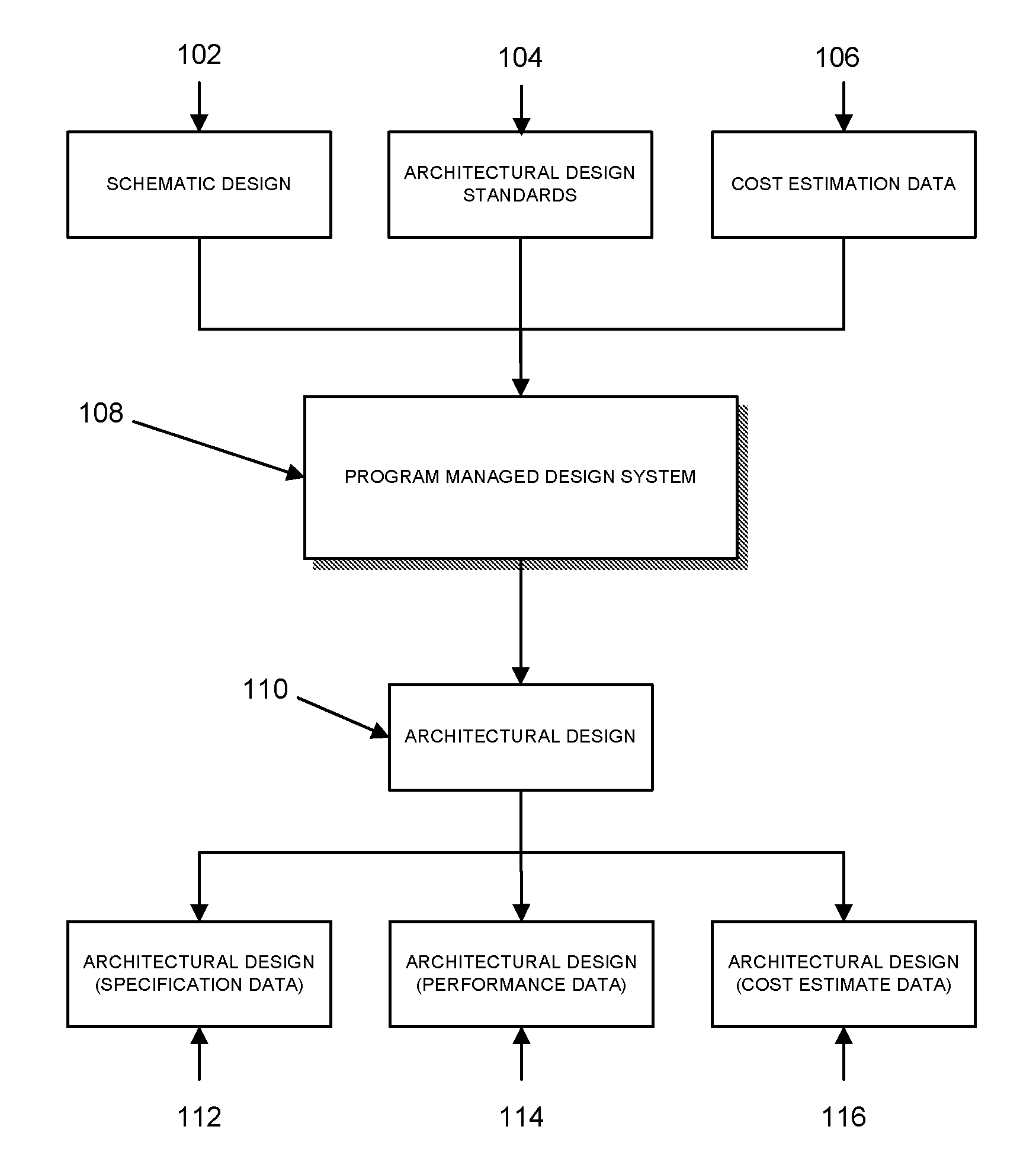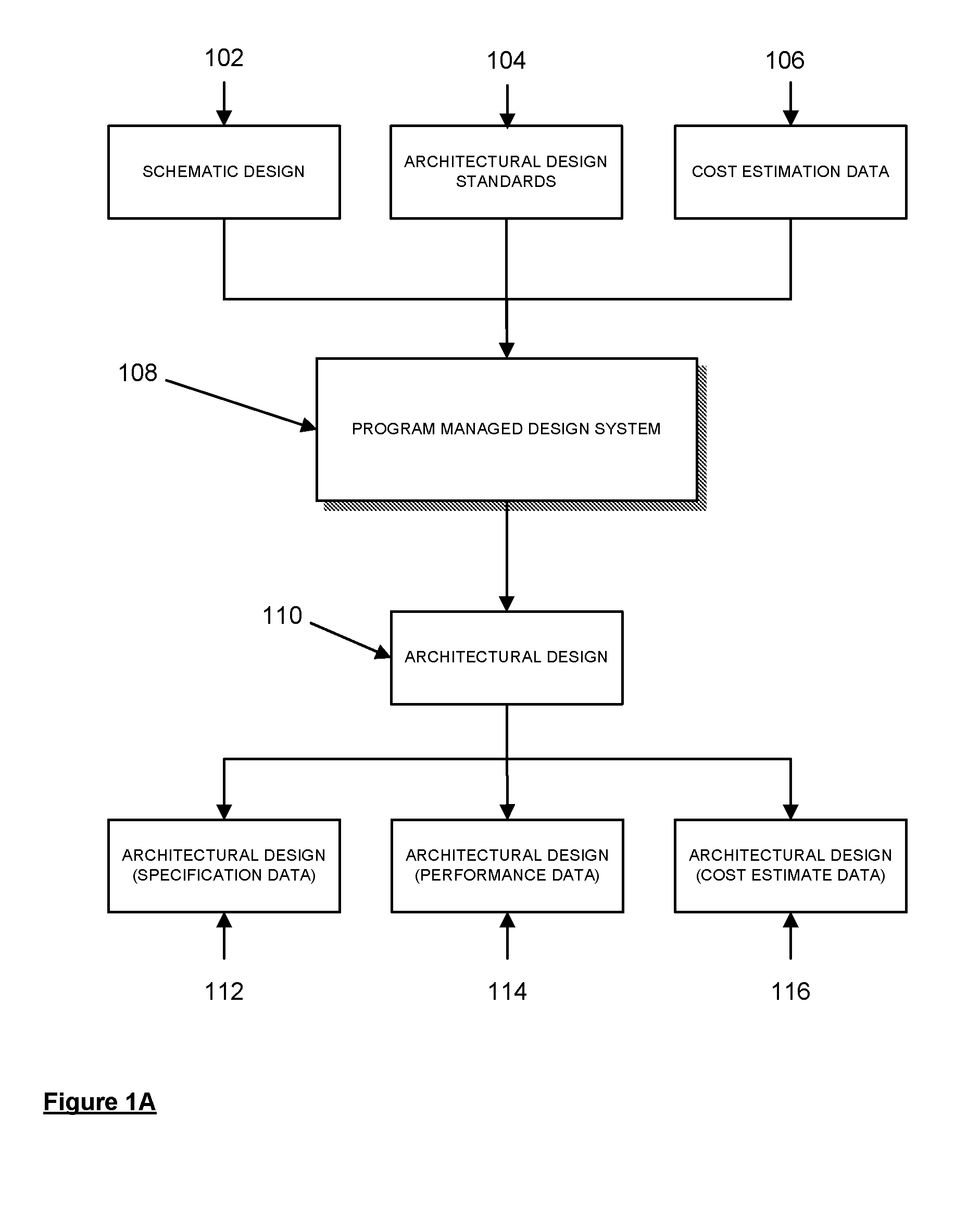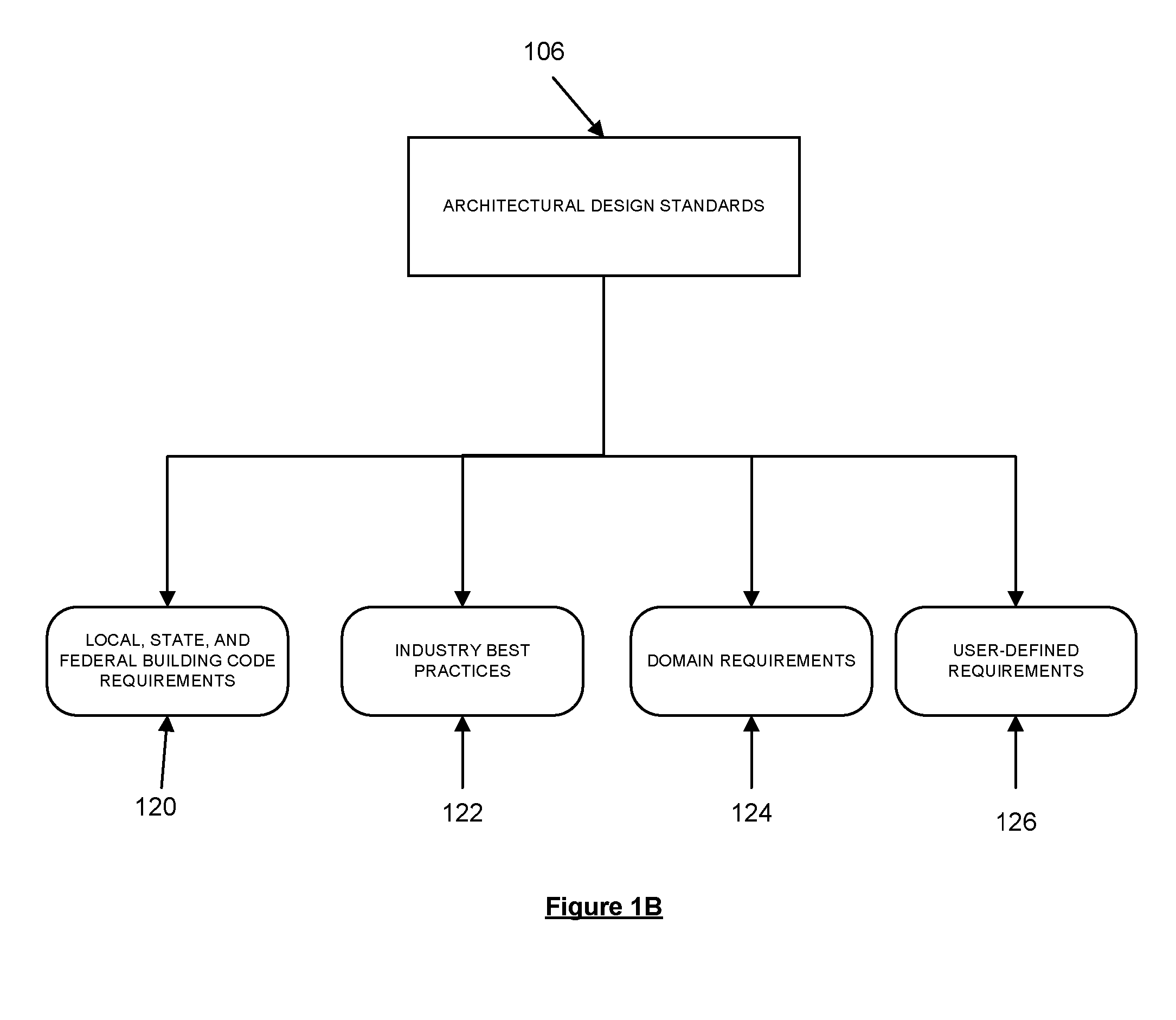Program managed design for complex construction projects
a technology for managing design and construction projects, applied in the field of project management tools, can solve the problems that the construction of complex building projects typically requires an immense effort in coordinating a multitude of skilled professionals, and achieve the effect of time, cost and content control over complex building design projects
- Summary
- Abstract
- Description
- Claims
- Application Information
AI Technical Summary
Benefits of technology
Problems solved by technology
Method used
Image
Examples
Embodiment Construction
.”
BRIEF DESCRIPTION OF THE DRAWINGS
[0013] For a more complete understanding of the principles disclosed herein, and the advantages thereof, reference is now made to the following descriptions taken in conjunction with the accompanying drawings, in which:
[0014]FIG. 1A is an illustration of a flowchart depicting the range of data inputs that are fed into a PMD System and the data outputs that result, in accordance with one embodiment.
[0015]FIG. 1B is an illustration of the various sources of data that the Architectural Design Standards draws from, in accordance with one embodiment.
[0016]FIG. 2 is an illustration of how two functional areas demarcated on a schematic map are graphically tagged, in accordance with one embodiment.
[0017]FIG. 3A is an illustration of a schematic drawing with multiple tagged spaces, in accordance with one embodiment.
[0018]FIG. 3B is an illustration of a schematic drawing once triangulation has occurred, in accordance with one embodiment.
[0019]FIG. 3C ...
PUM
 Login to View More
Login to View More Abstract
Description
Claims
Application Information
 Login to View More
Login to View More - R&D
- Intellectual Property
- Life Sciences
- Materials
- Tech Scout
- Unparalleled Data Quality
- Higher Quality Content
- 60% Fewer Hallucinations
Browse by: Latest US Patents, China's latest patents, Technical Efficacy Thesaurus, Application Domain, Technology Topic, Popular Technical Reports.
© 2025 PatSnap. All rights reserved.Legal|Privacy policy|Modern Slavery Act Transparency Statement|Sitemap|About US| Contact US: help@patsnap.com



